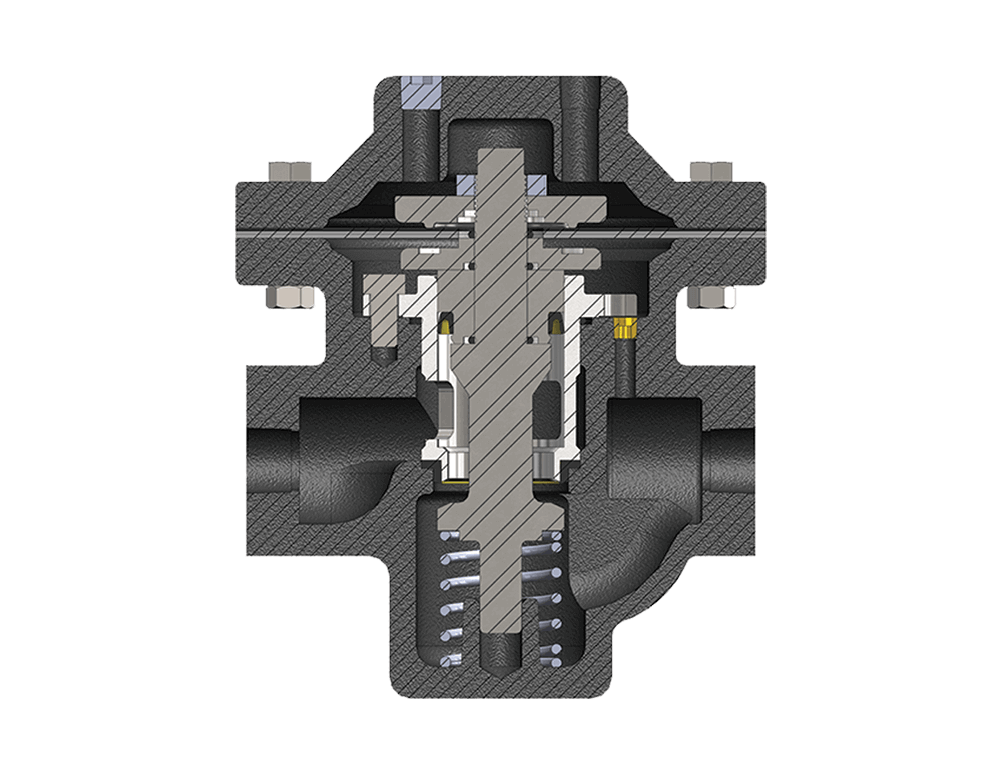
Training Solves Leaking Valves & Frequent Repair Issues
Burling Valve Case Study
Client: Natural gas pipeline services company
Case: Leaking valves, frequent repairs
A Burling Valve (Proportion-Air brand) client in the natural gas pipeline services industry has been experiencing short service life and leaks from their regulators. The client provides portable natural gas supply via trailers of compressed natural gas (CNG) and/or liquefied natural (LNG) gas for many applications, including pipeline integrity outages, natural gas well pressurization and emergency outages. The client uses a piece of equipment mounted on the trailers to vaporize LNG. They use a Burling regulator for introduction to the gate/metering station to the specific region under repair or upgrade service.
This demanding application is a great fit for Burling because of the constant vibration and changing temperatures. The client has been using a BD4 two-stage setup to reduce the LNG. The BD4 is a dome-loaded pressure-reducing regulator with a bottom return spring for proportional band control. In this client’s application, the first stage is 2500 psi to 600 psi; the second stage is 600 psi to about 400 psi.
The Challenge
The client used Grove brand regulators before switching to Burling Valve. The Grove regulators worked well, but repair kits are no longer available. The client’s technicians estimated that they experimented with eight or 10 different regulators and have found that Burling performs the best. There was one problem: Although the Burling regulators work great, they are not lasting as long as they would like. The regulators have been averaging a year or less before needing a new soft goods kit installed. A properly specified valve in this type of application can be expected to last at least two years.
Members of the Burling team visited the client’s location to provide a solution. Based on what the team knew, providing hands-on instruction on properly installing a repair kit was the right place to begin. Step one started by disassembling one of the first stage (high pressure) regulators that had been rebuilt by one of the techs. The only difference between the first stage and second stage regulators is that the first stage should have a Kel-F (also known as polychlorotrifluoroethylene, or PCTFE) seat and a PTFE seat for the second. While disassembling the high pressure regulator, the Burling team found that it had a PTFE seat instead of Kel-F. Also, the Burling team discovered that gasket sealant was not used between the metal gasket and PTFE membrane. While not always the case, for this client, the sealant is a must. This caused the regulator to leak by the seat and around the outer edge of the membrane. The Burling team showed the techs how to install the kit. It worked as intended – no leaks by the seat and no leaks around the membranes.
Next the Burling team looked at a second stage (low pressure) regulator that had also been rebuilt. When it came time to test the second stage regulator, Burling staff recommended the techs to test with no more than 800 psi on the inlet. The client’s techs informed Burling that they’ve been testing the low pressure regulator with the same pressure that they’ve been testing the high pressure ones: 2500 psi. After changing the inlet test pressure, no leaks were detected in the second stage regulator.
The Results
Properly repairing the regulators and adjusting testing pressures fixed the leaks and extended the life of the soft goods kits. The client was pleased with the outcome. The training was recorded so the client can refer to it if needed.
